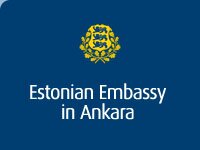Dates from Estonian history 
02.05.2005
In the area that now forms present-day Estonia, the first settlements occurred some 11,000 years ago, after the ice cap retreated.
13th century, first half.
During the 12th century the Baltic region had been in the hands of the Teutonic Knights. Estonia was incorporated into Christendom at the beginning of the 13th century, under the pressure of crusaders from Germany and Denmark.
14th century.
In the Baltic region, power was now in the hands of the Hanseatic League. Several Estonian towns and cities belonged to the League, including Tallinn (Reval), which had received its city charter as early as 1248.
16th century, first half.
The Reformation reaches Estonia, which from then on remained a part of the Lutheran cultural space.
16th century, second half - 17th century.
From 1558 onwards, Estonia became the battleground for a war involving Denmark, Sweden, Russia and Poland. Sweden came out as winner, and Estonia remained under her sphere of influence until the beginning of the 18th century. During Swedish rule, the first university in Estonia was founded at Tartu in 1632.
18th century.
The Great Northern War left Estonia under Russian rule (1721). Estonia became a window through which Peter the Great wished to gain access to Europe.
19th century.
The winds of numerous national movements blow through the whole of Europe. In Estonia, the period of national awakening commences. In 1862, a national epic "Kalevipoeg" was published. A high point of the Estonian national movement was the first nation-wide Song Festival organised by Johann Voldemar Jannsen and the Vanemuine society in Tartu in June 1869.
1918.
On the 24th of February the Estonian Republic was proclaimed. At first this was merely a decision made on paper. True independence was fought for over the period 1918 to 1920, during the War of Liberation. The struggle was crowned with success, and a treaty was finally signed with Soviet Russia, which revoked in perpetuity all claims over Estonia.
1918-1939.
This was the period of the first sovereign republic. During independence, Estonia established diplomatic relations and made its existence felt throughout Europe. Independence was curtailed by the signing of the Pact between Nazi Germany and the Soviet Union in 1939.
1940-1991.
Following the Soviet occupation in 1940, Estonia was occupied by Nazi Germany from 1941 until 1944. The Soviet Union incorporates Estonia in the fall of 1944. A large proportion of the population fled abroad. Many others were arrested and deported to Siberia. Those who remained, had to adjust to a new way of life.
The end of the 20th century.
Estonia succeeded in regaining independence by way of the Singing Revolution of 1988. She has been fully independent once more since 1991.
2004.
Estonia became a NATO member state on 29 March 2004 and a European Union member state on 1 May 2004.
More topics on Estonian history
 PDF 11KB PDF 11KB
 
|

